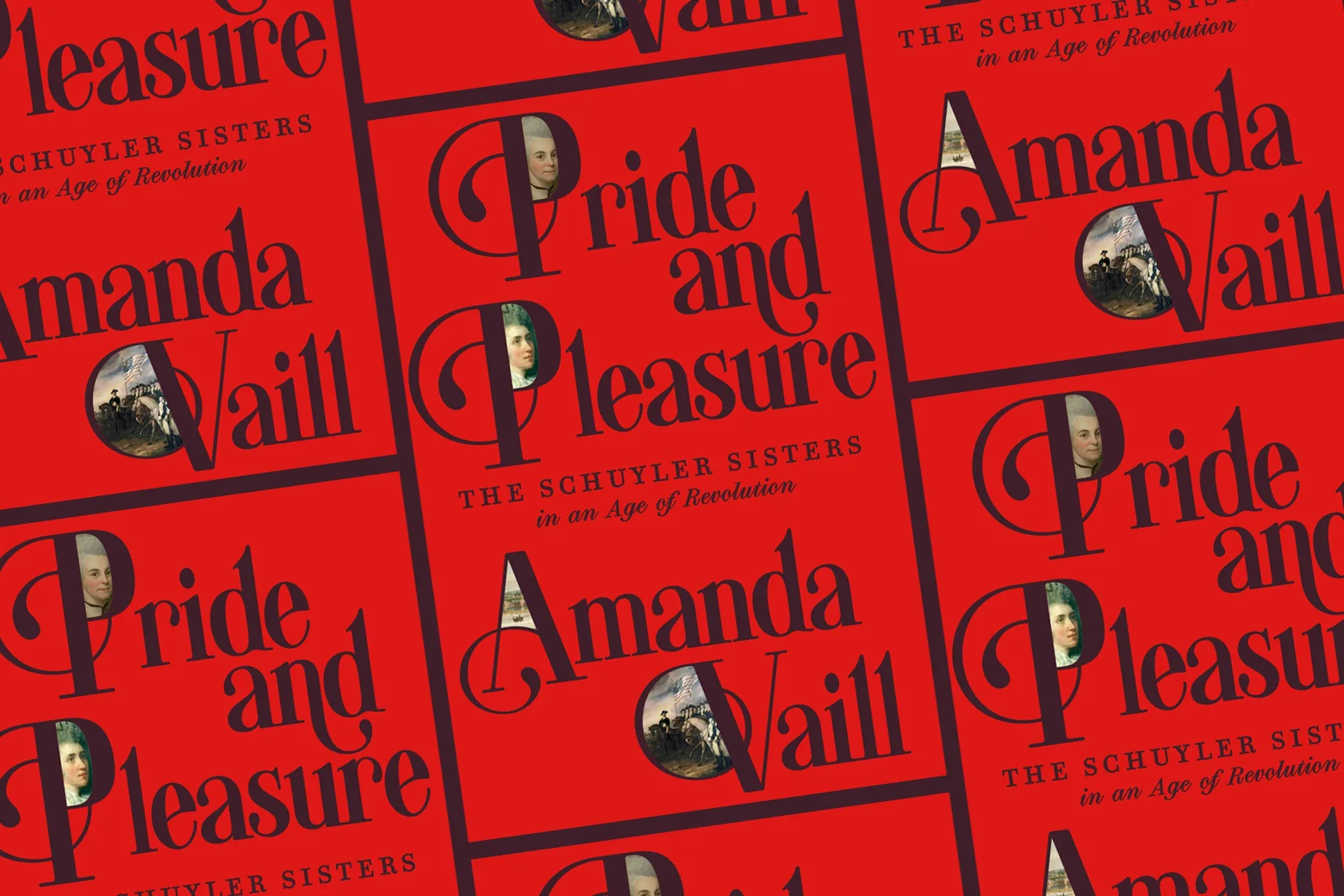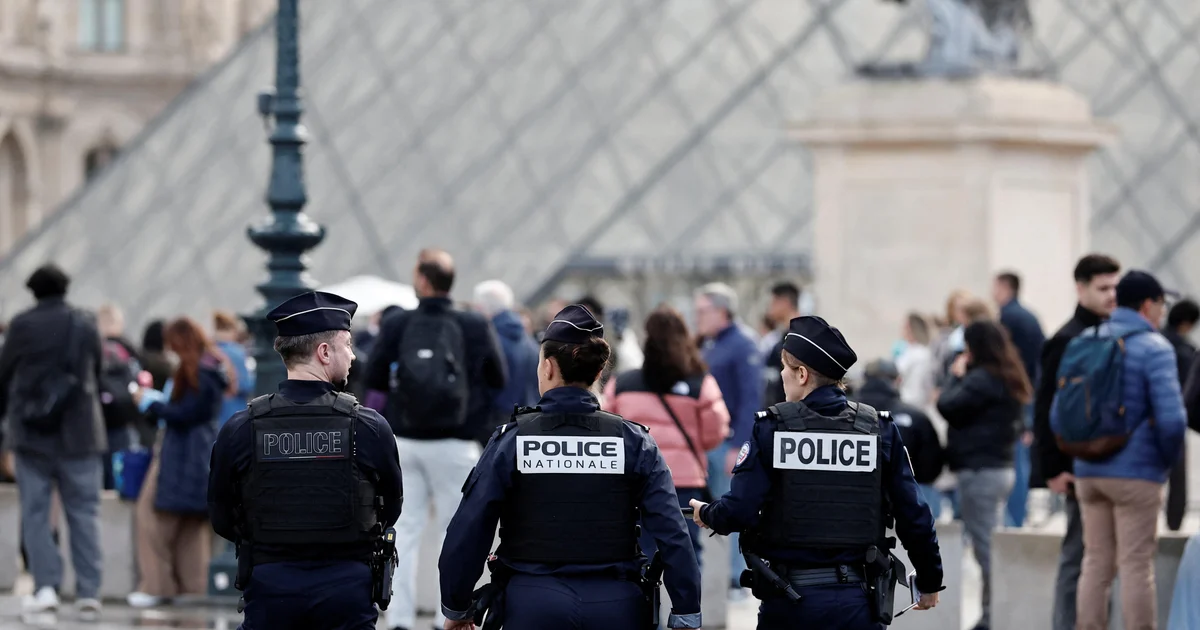Copyright Slate

Sign up for the Slatest to get the most insightful analysis, criticism, and advice out there, delivered to your inbox daily. When biographer Amanda Vaill read Ron Chernow’s Alexander Hamilton (2004), her first thought, she said in a recent interview, was “Oh! Somebody should write about Hamilton’s wife and her sister! He’s married to Eliza but seems to be attracted to Angelica!” But, Vaill added, “I was in the middle of a book of my own, so it wasn’t going to be me.” At about the same time, Lin-Manuel Miranda also read Chernow’s book. By 2015, Miranda’s hip-hop musical Hamilton had opened off-Broadway, where Vaill saw it shortly before it moved to Broadway. By then Vaill, past recipient of a Guggenheim, Peabody, and Emmy for her work as a writer and documentary screenwriter, had completed the biography she’d been working on and was looking for her next project but hadn’t found anything that compelled her. “I’m not interested in describing or exploring a subject,” she says. “I’m interested in telling a story. And I wasn’t in that theater for 20 minutes before I thought, Whoa! I need to check this out!” The musical, which depicts Eliza Schuyler, Hamilton, and Angelica Schuyler as emotionally entangled right from the get-go, catalyzed Vaill’s earlier feeling that there was a backstory to Hamilton’s relationship with his wife and sister-in-law that should be told. Vaill had a book contract in hand before Hamilton even got to Broadway, where it became the Pulitzer Prize–winning blockbuster it has been for the past 10 years. Not that Vaill presumed writing her new book, Pride and Pleasure: The Schuyler Sisters in an Age of Revolution, would be easy. “I was gently counseled by a writer who does famous men that this was maybe going to be a fool’s errand,” she recalls. “That’s what happens when you work in women’s history. With famous men, the stuff is there. You don’t have to hunt in weird places, which is enormously time-consuming but also completely fascinating. With women, you find stuff you didn’t know you were looking for.” Vaill, a historian and former executive editor at Viking Penguin, has had a lifelong interest in stuff—material culture—that she dates back to her first glimpse as a child of a facsimile of a letter, complete with bloodstains, that the French lawyer and statesman Maximilien Robespierre was writing when he was shot in the jaw. Her mother bought it at the Musée Carnavalet in Paris during Vaill’s childhood, and to this day she has it. “Documents! Documents speak to me, not just what’s in them but the way they are. Everything tells a story,” she says. The Schuylers were not only letter writers; they were scrutinizers of their surroundings—blueprints for the homes they wanted to live in, the fashions they wanted to wear, their furniture, jewelry, portraits, you name it—much of which Vaill examined and brings to her understanding of Eliza and Angelica. Slate receives a commission when you purchase items using the links on this page. Thank you for your support. Vaill, Chernow, and Miranda, it turns out, agree on the basic facts about Hamilton and the Schuyler sisters. He was a brilliant immigrant from the West Indies who survived a traumatic childhood, became the architect of America’s financial system, made friends of many with his affable, spontaneous wit and enemies of many with his angry, impulsive screeds, was blackmailed after an ill-advised affair with a woman named Maria Reynolds which ended his political career, and died before he was 50, following a duel initiated by then–Vice President Aaron Burr. And yes, all three authors wondered whether Hamilton was having an affair with his sister-in-law Angelica. As it turns out, all three used those facts to tell different stories. As Chernow said in an interview, he had long written about bankers, such as J.D. Rockefeller and J.P. Morgan, including in a project for which he won the National Book Award, but he feared that more books about “Gilded Age moguls” would make him stale. Taking on the project of writing a “go-for-broke, authoritative text” appealed to him: “Hamilton drew me back to the founding of Wall Street.” (And his next biography, of George Washington, would win him a Pulitzer Prize.) Miranda, the son of immigrants and author of the musical In the Heights, about immigrants, had a different story to tell. “What I recognized in Hamilton … was his relentlessness. I recognize that relentlessness in … so many immigrant stories I know,” he told an interviewer in 2016. Immigrants “know they have to work twice as hard to get half as far”—or, as one set of his lyrics puts it, “Immigrants! We get the job done.” For Miranda, the powerful attraction between Hamilton and Angelica was useful. It created an occasion for gentler music, a melodic alternative to the rapid-fire lyrics that reflected hip-hop’s association with masculine aggression. It also seemed plausible that musical variety, which he had long been drawn to, would appeal to a wider audience. But Miranda took some liberties with historical accuracy, as musicals often do, creating an Angelica who was determined to marry a rich man, ending the romantic subplot with Hamilton. It was Burr, not Eliza or Angelica, who was essential to Miranda’s version of a biography of Hamilton. Burr meets—and disparages—Hamilton in the play’s first minutes, beginning a tension that grows until, at the play’s close, Burr fires the shot that will end Hamilton’s life. With her focus on sisters born in 18th-century rural New York and coming of age during the American Revolution, Vaill moved to entirely new territory. She is clear about her admiration of both Chernow and Miranda (the latter of whom, it happens, she has known in person since he was in a high school jazz chorus with her daughter), but where she found less of a consensus with them was in their view of women. “Everyone, including Chernow and Miranda, made Eliza out to be this two-dimensional stick figure, almost unbearably loyal and self-effacing,” says Vaill. Chernow said in an interview that he found Eliza “gutsy,” and given his understanding of Hamilton’s volatility, he praises her as “an ideal companion for Hamilton, lending a strong home foundation to his turbulent life.” He also offered an appraisal of their respective attractions as women. Eliza, though “pretty,” might have been a “tomboy,” while Angelica, with whom Hamilton had “a friendship of unusual ardor,” had a “more mysterious femininity than her sister.” What does Vaill think of this? “Without being too feminist, it’s a really male thing to make Angelica into the sexy one and Eliza into the good one,” the biographer says. “Other male historians went the same route. Basically, they all want to date Angelica, and they all think that Eliza is a bore.” Vaill also takes exception to the characterization of Eliza as self-effacing. “I really love my girls,” she says of Eliza and Angelica, “and I think I go a step or two beyond Chernow on the Eliza front. What I find interesting about Eliza is the stealth influence she has over Hamilton that no one was aware of. She can’t spell worth beans, but she can definitely write!” One instance of many that reinforced Vaill’s conviction about Eliza’s influence occurred early in Washington’s presidency. Hamilton, as secretary of the Treasury, had proposed to charter the Bank of the United States. Though the move was approved by Congress, James Madison, who, like Thomas Jefferson, was wary of a strong federal government, encouraged Washington to veto it as unconstitutional. Washington turned to Hamilton, asking him to write a memo with his reasons for support. “I don’t think Chernow was lucky enough to find them,” says Vaill, whose research took her to various archives and libraries, “but there was this multivolume economic series by Adam Anderson,” History of Commerce, that she came across—“and they had [Eliza’s] name in them!” The volumes, linking British governance to its economic stability, were cited by Hamilton in his 1791 memo, supporting his argument in favor of establishing the Bank of the United States, and were likely in the Philadelphia home Eliza and Hamilton lived in at the time. “They were Eliza’s books! Not his!” Vaill says. “Eliza talked about how they sat up talking on those long nights.” In the end, Washington did not use his veto, “and my inference is that Eliza helped [Hamilton] do all this, writing down as he dictated. She’s not just keeping his slippers warm and making dinner.” In Vaill’s first three biographies, her focus was largely on 20th-century artists’ professional and intimate lives during moments of cultural upheaval—the Lost Generation after World War I, in Everybody Was So Young (1998); reporters, photographers, and press officers covering the Spanish Civil War, in Hotel Florida (2014); or the choreographer Jerome Robbins living through McCarthyism in Somewhere (2006). Eliza and Angelica, born 300 years earlier, had been raised to expect a life like their mother’s, as wealthy Dutch colonial wives overseeing a large country estate in New York’s Hudson Valley. “Instead,” says Vaill, “they went on to live these really quite unconventional extraordinary lives,” in whom they married, where they lived, and what they did. “These women’s stories emerged from history. Using the metaphor of warp and weft, these women are living in history. They are weaving their lives through history. It’s influencing them. They are influencing it.” Vaill’s own literal hands-on encounter with Eliza’s books is one of many illustrations she offers about history’s influence on the individual and the individual’s influence on history. But some history that happens is like those unheard trees falling in the forest. Vaill, like some historians, believes that the story told of the American Revolution remains one that has been told by and about men—those who take pens to parchment, as well as those who take muskets to battlefields. Vaill could have made Pride and Pleasure a briefer book if she had chosen to constrict the male narrative and focus on the sisters alone. But in joining it with her own now-recovered narrative, she is restoring sound to the fallen forest trees, and possibly presenting a new conception. Determined not to quarantine either story, she prefers what she calls the egalitarian “jump cut,” to the subordinating “meanwhile.” Vaill never writes her books in a style she would call her own. She cultivates at least a single voice, stylistically appropriate, for each of her books. In Pride and Pleasure, Vaill uses two voices, applying tone aesthetically and instructively, almost as Miranda does. For the historical narrative that we already know, she includes dated words like tonnish and branglers, as well as dated metaphors, characterizing conversations among diplomats as “decorous minuets,” and sprinkling in references to 18th-century authors like Tobias Smollett and Laurence Sterne. “For the girls’ story, I just started writing in the present tense, and it seemed so fluid and immediate,” she says. A reader may feel the difference between the two voices without registering it. What about her attitude toward Hamilton himself? As a biographer, she does not offer opinions and does not speak in her own voice in print, but in conversation she is funny, emotionally generous toward Hamilton and sometimes amused by him. “He’s brilliant, no doubt, but he’s an orphan, dependent on charity growing up. And he’s needy! Male historians have maybe seen it, but they haven’t really seen it. The letters he writes to [Eliza], even during their courtship, oh my God! He’s constantly saying to her”—and here Vaill adopts a whiny, sulky tone—“I’ve written you three letters in the last two days, and you haven’t written me one. You have nothing to do! Just write to me and love me, love me, love me!!!” What about the Did-they-or-didn’t-they? that has prompted so much curiosity about Hamilton’s relationship with Angelica? Chernow believes there was an intense attraction between the two, and writes that many of their contemporaries assumed they were lovers, but he does not join that consensus, and neither does Miranda. What about Vaill? She won’t say what she thinks, but she includes more than a few salient paragraphs: For instance, Angelica, who has been living in Paris and London for several years, returns to New York in the spring of 1789 for Washington’s inauguration, and, Vaill writes, “for most of July, she and Hamilton are alone in New York together,” while Eliza is in upstate New York with her family. When Angelica first arrives, Hamilton rents her a horse and carriage, but then, Vaill writes, “for some reason, he seems to rent Angelica a different carriage, and horses than those she had previously. Perhaps the new equipage is less recognizable.” The two in-laws were seen around town together, “causing a murmur of conjecture in society,” Vaill writes, pointing out that “the murmurers know that—since women wear no undergarments other than stays and shifts—it doesn’t take time or even a special place to gratify desire. Gouverneur Morris [a close friend of Hamilton’s] … can do it in a carriage.” Several years later, after another visit, Angelica becomes pregnant with her last child, a son she names Richard. In an aside tucked away in a footnote, Vaill notes: “Surviving photographs of [Richard’s son] bear an uncanny resemblance to portraits of Alexander Hamilton, particularly the [James] Sharples pastel [portrait] that family members consider the best.” In the end, it is Angelica whose words provide the book’s title, writing to Eliza, “You would not have suffered if you had married into a family less near the sun, but then you would have missed the pride, the pleasures, the nameless satisfactions.” And perhaps there is an irony in having Angelica address that line to Eliza, since it was Hamilton and Angelica—and not Eliza at all—who were most intent on being highfliers. Hamilton was dead by 1804, and Angelica 10 years later. Vaill says she sees Angelica herself as a “tragic figure,” a woman who aspired to have political power in the world of European salons, failed in her bungled effort to get Lafayette out of jail after the French Revolution, and never could have the man she loved. Although she made flirtatious connections with Jefferson, Benjamin Franklin, the Prince of Wales, and others, she was never as influential as she hoped to be. Vaill calls firstborn Angelica an “alpha female” who adored her younger sister but wondered, How’d she get him? Previous biographies of Hamilton end with his death in 1804. Chernow ends with a brief chapter devoted to Eliza’s life during her 50 years of widowhood, while Vaill makes her the focus of the 100-plus pages of Part 3. Chernow characterizes Eliza as “a woman of towering strength,” noting her dedicated work for an orphanage she co-founded as well as the Hamilton Free School, a no-tuition primary school not far from Eliza’s home in upper Manhattan that she established, and that was the first in the neighborhood for families who could not afford tuition. He regrets that due to the destruction of her own letters, historians could not tell a well-developed story about her, unlike other wives of the Founding Fathers, like Martha Washington, Abigail Adams, and Dolley Madison. But without Eliza’s devotion to compiling Hamilton’s writings (and, eventually, her race against time to interview his peers before they died), his own designation as a Founding Father might not have been guaranteed, especially since the phrase wouldn’t even be coined until the 20th century, and is therefore based entirely on the posthumous reputations of those so designated. “Hamilton was so in disfavor when he died that he was just in the wilderness,” says Vaill. “Without Eliza, who in a way was his first biographer, he would have just been a blip on the radar. She just insisted on his primacy, insisted on it!”—lobbying Congress till it purchased a good many of his papers for the Library of Congress and pushing her son John Church Hamilton to write the biography, a work not completed till after her death. Vaill also notes that Eliza never remarried and wore black widow’s weeds for the rest of her life, a choice not customary in early 19th-century America, where most widows moved toward everyday dress within two years. Underneath her outfit, “in a little bag next to her skin,” Vaill says, “she wore his little poem,” a love sonnet he’d written her during their courtship. “And I don’t think I’ve ever said this in so many words, but I did think to myself that once Hamilton was dead, she had him to herself. Nobody would get to come between her and him ever again.”



